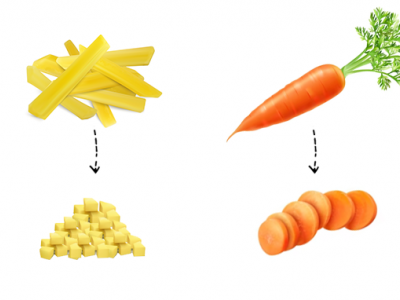Sensors

Perth-WA is the localization dataset that provides 6DoF annotations in 3D point cloud maps. The data comprises a LiDAR map of 4km square region of Perth Central Business District (CBD) in Western Australia. The scenes contain commercial structures, residential areas, food streets, complex routes, and hospital building etc.
- Categories:
 435 Views
435 ViewsTo gather the dataset, we asked two participants to perform six basic knife activities. The layout of the system experiment is provided in Fig. 4. As it illustrates, we put the receiver on the right side and the ESP32 transceiver on the left side of the performing area. The performing area is a cutting board (30 x 46 cm) in this experiment. Each participant performs each activity five times in the performing area.
- Categories:
 448 Views
448 Views
Human activity recognition (HAR) has attracted much attention. However, the existing HARs have shortcomings, such as few recognized activities, no identification, privacy leakage, and battery maintenance. Aiming at these shortcomings, this team has devised a body RFID skeleton that fully senses human activity and further proposes highly-accurate and fine-grained (total of 21 activities) HARs. The body RFID skeleton senses human activity by collecting tag response records of the skeleton node.
- Categories:
 31 Views
31 ViewsSolution processed all-inorganic lead halide perovskites are widely utilized to develop photodetectors (PDs) due to their excellent optoelectronic properties. The low-cost TiN electrode not only has better corrosion resistance than Ag electrode but also possesses good conductivity comparable to Au electrode, but the utilization of TiN electrode in perovskite PDs has been rarely reported.
- Categories:
 166 Views
166 Views
The formation and changes of the pulse wave areaffected by the functional status of the heart, blood, and arterial vessels. The pulse signal covers pathological information in the cardiovascular system, and the doctor of traditional Chinese medicine (TCM) can diagnose diseases by feeling the pulse. The diagnosis of diseases through feeling the pulse of TCM primarily relies on the doctor’s feelings and subjective experience, and it lacks objectified data.
- Categories:
 2049 Views
2049 Views
This dataset is made of the Channel Impulse Response (CIR) data collected in 9 different environments in Ghent city, Belgium. These environments include:
1. Fourth floor at iGent Tower in the premises of Gent University
2. Zwijnaarde Open Area
3. Stadhuis Street and Nearby
4. Zuid Mall
5. Portus Ganda
6. Sint-Pieters Railway Station
7. Krook library
8. Citadel Park
9. Graffiti Straat
- Categories:
 649 Views
649 Views
High sensitivity optical fiber temperature sensors are extremely important in the domains of biology, medicine, and chemistry. To the best of our knowledge, this paper presents a novel designing framework for high-performing fiber temperature sensors. Photopolymerized-waveguide is embedded in typical Mach-Zehnder interferomenter framework with multimode fiber-single mode fiber-multimode (MSM) structure.
- Categories:
 24 Views
24 ViewsCars, mobile phones, and smart home devices already provide automatic speech recognition (ASR) by default. However, human machine interfaces (HMI) in industrial settings, as opposed to consumer settings, operate under different conditions and thus, present different design challenges. Voice control, arguably the most natural form of communication, has the potential to shorten complex command sequences and menu structures in order to directly execute a final command.
- Categories:
 556 Views
556 Views


